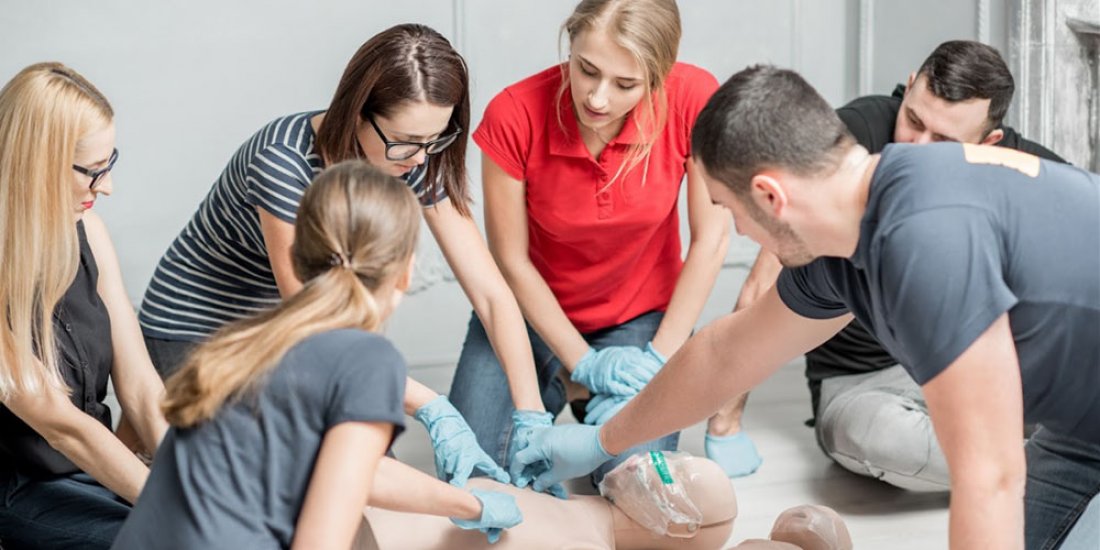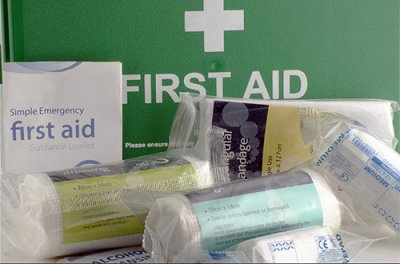Top 5 Reasons To Learn First Aid

First aid is the basic medical care provided to someone experiencing a sudden illness or injury, namely in an emergency. This kind of support helps keep the person in a stable condition until full treatment becomes available. In cases such as minor cuts, stings, and burns, first aid alone can manage them.
Given its benefits, first aid is a crucial skill to learn. Medical emergencies can happen with no doctors or paramedics nearby.
First aid does not require you to be a fully-trained healthcare provider. Learning the necessary first aid techniques isn't too difficult.
Fortunately, some different organisations and institutions offer first aid training courses.
When done correctly, first aid can go a long way toward preventing medical emergencies from getting worse.
Here are some compelling reasons to learn first aid.
1. Helps Save Lives
You may have been in a situation where someone needed urgent medical attention, but no doctor or paramedic was available to help. Immediate first aid can mean the difference between life and death.
For example, if you know how to perform CPR (1), you are in a position to possibly save the life of a person who has stopped breathing.
In some instances, remoteness or traffic delays can prevent prompt response from professional emergency medical personnel. When you know how to provide first aid, you'll be able to help keep the victim alive for as long as possible.
2. Prevents Medical Situations From Deteriorating
Any medical situation can worsen if not dealt with as soon as possible. For example, there will be more severe consequences if an accident victim's bleeding isn't stopped.
In cases of exsanguination or severe haemorrhage, a victim can lose up to 40% of their blood. If not interrupted early, this massive bleeding can initiate the "bloody vicious cycle", which often ends with the patient's death. (2) (3)
Even in operating rooms, blood loss can still occur. Monitoring and control are necessary. Damage control should be done as early as possible, especially for patients who have lost approximately 500mL of blood and for those who have injuries that may risk such blood loss. (3)
If you learn how to perform first aid, from institutions such as Australia Wide First Aid, you'll be learning how to keep the victim stable until professional help arrives. By preventing the situation from deteriorating, follow-up treatment for the casualty will be more easily managed and recovery will generally be improved. (4)

3. Relieves Pain
Accidents and injuries are inevitable. And so too is pain.
No matter the injury or illness, the resulting pain can be different for different people. Learning first aid includes learning how to stabilise the condition and manage the pain.
Aside from pain caused by stings, sprains and impact injuries, first aid treatment can also help reduce swelling and allergic reactions. Prompt first aid can often minimise the need for a hospital visit. (5)
Moreover, simply helping the victim ease themselves into a sensible and more comfortable position can help alleviate pain. It may even help them get much-needed rest. (4)
4. Offers Patients Comfort
Providing reassurance and comfort to an injured or ill person will go a long way toward them being able to stay strong and weather the situation
In addition to your words, the action of performing first aid procedures confidently and stabilising their condition, adds further reassurance.
5. Improves Safety
Basic first aid training will help in improving safety for you and everyone around you. In terms of risk management, first aid knowledge alerts you to potential dangers posed by liquid spills, electricity, heat, and much more.
With your senses fine-tuned to safety in your environment, you will no doubt see opportunities to keep friends and family safer and reduce the frequency of accidents. (4)
First aid knowledge and its proper execution also help ensure the prevention of infection or further injury. This can be as simple as using gloves to help keep the situation sterile when cleaning and dressing wounds.
The health and safety guidelines for dealing with the COVID-19 pandemic even include basic first aid strategies. (6)
Conclusion
First aid is neither difficult, time-consuming, or expensive to learn. Yet we know that accidents and injuries are inevitable.
Being able to provide prompt and appropriate care for people in pain and discomfort and preventing their condition from deteriorating looks good on your CV too.
No one can tell when you'll need first aid skills, but we can all agree it's better to be safe than sorry.
References
- "Three Things You May Not Know About CPR", Source: https://www.cdc.gov/heartdisease/cpr.htm
- "Severe Bleeding: First Aid", Source: https://www.mayoclinic.org/first-aid/first-aid-severe-bleeding/basics/art-20056661
- "Managing Exsanguination: What We Know About Damage Control/Bailout Is Not Enough", Source: https://www.ncbi.nlm.nih.gov/pmc/articles/PMC1200784/
- "5 Reasons Why Basic First Aid Knowledge Is Important", Source: https://stlucia.loopnews.com/content/5-reasons-why-basic-first-aid-knowledge-important
- "Top Reasons Why Emergency First Aid is an Important Skill to Have", Source: https://www.first-responders.ca/2020/10/15/top-reasons-why-emergency-first-aid-is-an-important-skill-to-have/
- "St John Guide To Effective First Aid Infection Control", Source: https://www.stjohn.org.nz/first-aid/first-aid-library/infection-control-in-first-aid/

Editorial Team

